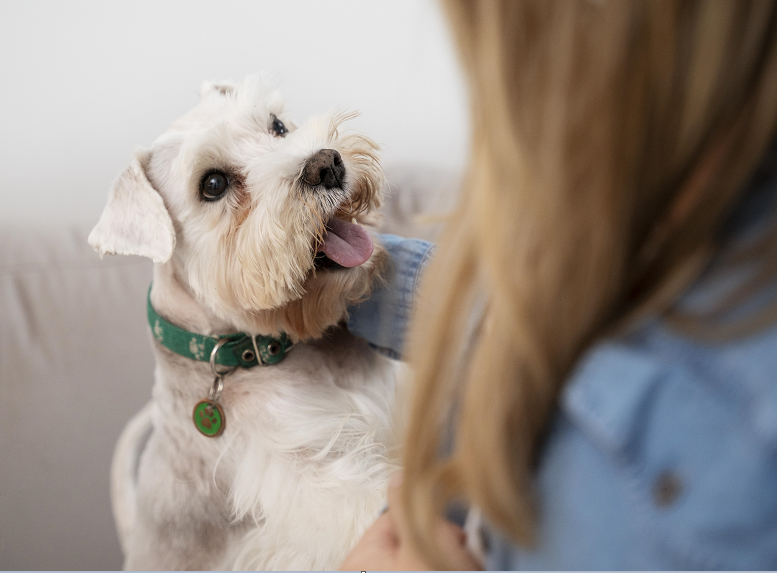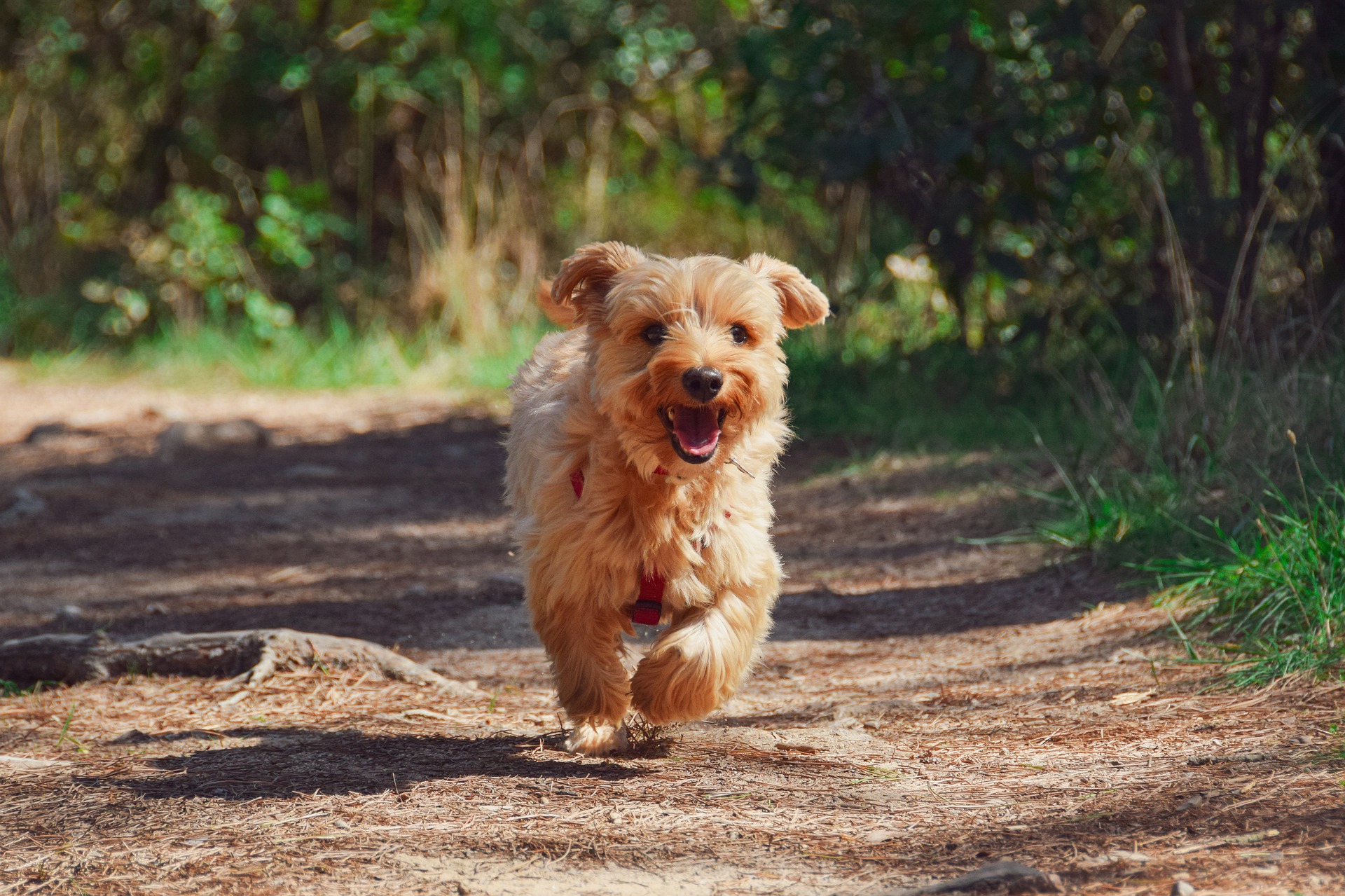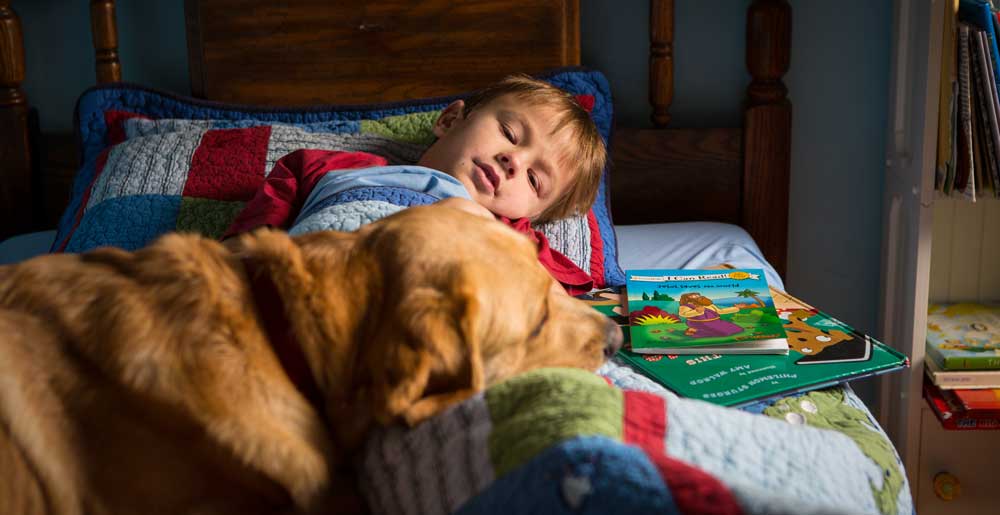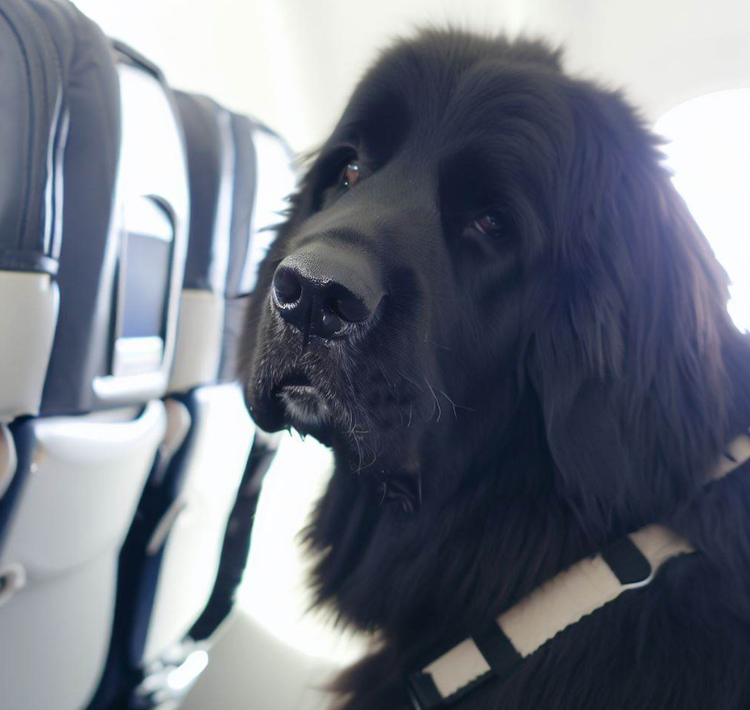
Training a dog or having them professionally trained as a service animal has a lot of benefits for both the physical and mental health of many disabled individuals worldwide.
Sometimes, the training process can be challenging, which can be caused by different factors such as the dog’s temperament, the fact that they do not suit the handler’s needs, the living conditions that the dog is provided with, or the inability of the user/handler to take care of the dog and properly train them.
Further difficulties can unfortunately also occur due to the size of the service dog. While the size of the dog is not a limitation for training them as “medical equipment”, it can still cause inconvenience, particularly during a flight.
If you are considering flying with or training a large breed service dog, then the information provided below may be very helpful to you.
Are There Limitations on the Size of Service Animals?
No, there are no restrictions on what size your paw friend can be.
Moreover, if you are looking for a dog to perform mobility tasks, it is logical to opt for a canine of a large breed having a strong and muscular physique.
Tasks such as pulling a wheelchair, supporting individuals with balance issues, protecting individuals from falling down and getting injured, pushing a shopping cart, etc., are among the tasks that large dogs are most suitable for.
For instance, dog breeds such as the German Shepherd, the Saint Bernard, the Bernese Mountain Dog, the Great Dane, the Newfoundland, etc., can be of great help to individuals with mobility issues.
You can of course also train a large dog to perform tasks to mitigate the symptoms of a mental disability, but you can not train a dog of a small breed to perform physically demanding tasks.
The only type of limitations in regard to service animals may be related to dog breeds, that are generally banned in a particular country. In this case, you should get familiar with the procedures in situations where a person wants to raise and eventually train a dog of such breed.

Under What Circumstances Can Airlines Deny a Service Dog Access to the Passenger Cabin?
According to the information provided on the website of the U.S. Department of Transportation:
“Airlines are permitted to deny transport to a service dog if it:
- Violates safety requirements - e.g., too large or heavy to be accommodated in the cabin;
- Poses a direct threat to the health or safety of others;
- Causes a significant disruption in the cabin or at airport gate areas; or
- Violates health requirements - e.g., prohibited from entering a U.S. territory or foreign country.
Airlines may also deny transport to a service dog if the airline requires completed DOT service animal forms and the service animal user does not provide the airline these forms”.
As you can see, the large size of a service animal is listed as a potential reason for denying the dog access to the passenger cabin.
However, does this mean that airlines will reject your service dog the moment you provide information about what size they are? No, it does not.
What Can Airlines Do to Accommodate a Large Service Dog?
As you may already know, the rule states that service animals must be able to fit in the footprint under the handler’s seat.
In case, the animal is too large and can not fit this space, there are a few things you may be offered:
Re-accommodation
In terms of flying with a large service dog, re-accommodation could mean allocating a seat with additional space in front of it, such as a bulkhead seat, to accommodate the dog comfortably. An important rule to remember is that the dog must not obstruct access to the emergency exit or to the aisle, so you should keep this in mind.
Also, the seat location will be within the same class of service.
Ask the Other Passengers for Assistance
Airline staff may ask the other passengers to cooperate. This could mean for the passengers to “volunteer” by sharing their foot space with the service animal. In most cases, there are (many) people willing to help, especially if they will have the opportunity to travel next to and maybe pet a sweet big boy or girl.
Cargo Area / Checked Pet
If you find yourself in a situation where you can not be re-accommodated or there are no passengers willing to share their foot space, the airline may offer you to accommodate your service dog in the cargo area for free.
This is of course not ideal for most handlers, who do not want to leave their dogs unattended in a confined space. Especially during the cold and very hot seasons, some incidents can occur, despite all the precautions airlines take.
Later Flight / Re-book
You may need to re-book your flight or be offered accommodation on a later flight in case there is enough free space available for your dog.
Buy an Extra Ticket
In case your service animal is too large to comfortably travel under your seat, you may be asked to buy a ticket for them. Unfortunately, this does not mean that your dog will be able to occupy a seat.
It is important to remember that airline agents same as you want you and all the passengers to have a pleasant experience during the flight. They offer assistance to passengers with physical and/or mental disabilities, especially when traveling with a service dog.
Flight attendants will provide you with support, guidance, and the necessary equipment if needed to facilitate a comfortable flight and transition on and off the plane.
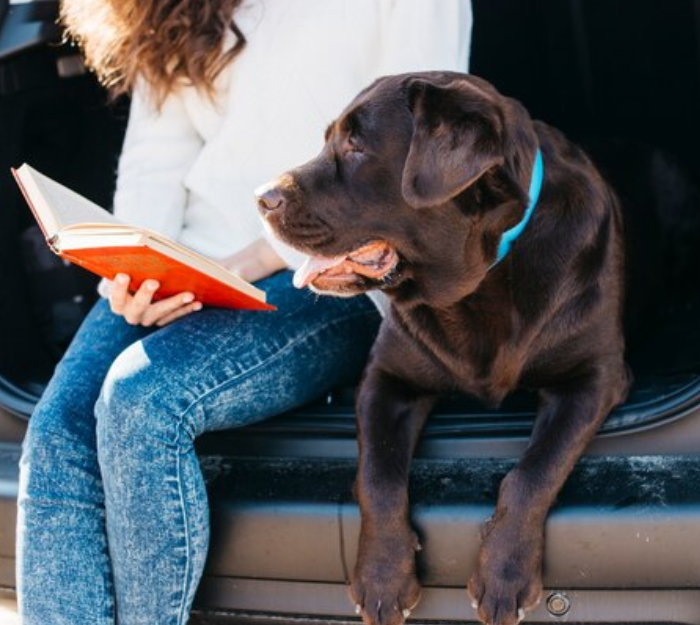
What to Consider Prior to Flying with a (Large) Service Dog?
Is Your Dog Properly Trained?
Your paw friend may provide you with great emotional support, and be the gentlest soul at home...but has your dog actually gone through proper training as a service dog? Can your dog ignore all the distractions at the airport and on the plane? What about their public manners?
You need to honestly answer all these questions to make sure that your dog is properly prepared and ready to accompany you on the plane.
Feeling stressed is, unfortunately, something common when preparing for a flight with a service dog, but evaluating your dog’s skills as a service animal and your skills as a handler, objectively, will help you make the right decision.
This could mean not hesitating to take them on a flight with you, or reconsidering your decision until your paw friend’s progress is sufficient.
Did You Check the Airline’s Policy?
Checking the service dog policy of the airline and ensuring that all the requirements are met and all the documentation is prepared, is a crucial part of traveling with a service animal!
Your dog must be up-to-date with all vaccinations, leashed, tethered, or otherwise under control at all times, must have reached the minimum age to be allowed on a plane which in most cases is 4 months old, well-behaved, and must appear healthy and well-groomed.
You must of course provide all the required documentation for travel with a service animal, which may vary based on the airline and the country of departure and arrival.
If you are flying within the US or from/to the US, you will need to fill out and submit a DOT form, that requires information about the animal’s health, behavior, and training.
More detailed information about the DOT form and how to fill it out correctly, especially if you have trained your dog yourself or with the help of an owner/self-training program, can be found in our article “How to Fill Up DOT Service Animal Air Transportation Form To Fly With Your Service Dog”.
A medical letter may not be legally required, but it is recommended that you obtain one and carry it in case airport or airline agents doubt the legitimacy of your service animal.
Did You Contact the Airline in Advance?
Most airlines require service dog handlers to contact them at least 48 hours in advance, and others-even at least 72 hours prior to departure.
Never forget to inform the airline about your intention to bring a service dog to the plane.
Also, you may want to find information about the relief areas at the airport and take your dog for a walk before the flight. This will ensure that they have spent their energy and will be more likely to remain calm and relaxed.
Did You Prepare All the Necessary Supplies for Your Dog?
These include basic supplies such as food and water, but also comforting items such as toys and blankets.
Do not forget to prepare pee pads, diapers, or water disposal bags, especially if your flight will be longer than 8 hours. In this case, you will also need to submit a Relief Attestation Form. It states that your service animal won’t relieve themselves during the flight or will do it in a sanitary manner.
It is also recommended that you pack medication and health supplies. If your dog is not doing very well on a plane or on a car ride, you should consult with a veterinarian for a solution.
Airlines can make additional arrangements to accommodate large service dogs, such as providing extra space, allowing floor space, or offering to re-book the flight. Service dog handlers, on the other hand, need to communicate their needs, comply with airline policies, ensure proper training and behavior of their dogs, and pack necessary supplies for a successful and comfortable travel experience.
By working together, airlines and service dog handlers can help flying with a large service dog turn into a positive and pleasant experience.




